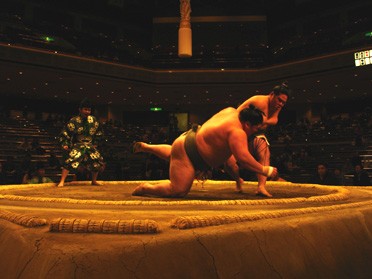|


Brothers still active on the dohyo get their turn
SFM’s most eminent historian, JK, has a crack at the impossible and tries to see who was the greatest of the tsuna wearers
Takanobori – former sekiwake, former NHK man and all ’round gent
Kitanoumi-beya, Kitazakura, mirrors & photo bonanza
Kazuyoshi Yoshikawa (son of the late sekiwake Takanobori) on life in sumo way back when
Behind every good man there stands a good woman – read and ye shall see. A departure from our regular 101 feature
plus much more through the lens of our photographers
Lon gives us his Hatsu Basho summary, along with the henka sightings results
Mikko Mattila covers lower division goings on in detail
Pierre predicts the Haru Basho banzuke while Mark highlights the ones to look out for in Osaka
Mikko takes us on a tour of his chosen kimarite
John’s unique bimonthly view of sumo news from outside the dohyo and in the restaurants!
SFM’s own Alexander Nitschke covers the long running Hoshitori Game
Todd’s bimonthly focus on 3 of the most interesting sumo sites today
a pair of Kiwis exchanging opinions on the honbasho going on the road
SFM Cartoons
Benny Loh & Stephen Thompson
In the third of our cartoon bonanzas, sit back and enjoy BL’s offerings and put a caption to ST’s pic to win yourselves a banzuke
made you a sumo fan? A unique perspective from a sightless reader.
readers had to say since our last issue
Sumo Quiz
The Quizmaster
Answer the Qs and win yourself next basho’s banzuke.
|
 |
KIMARITE FOCUS #5
Shitatenage, Shitatedashinage & Shitatehineri
by Mikko Mattila
|
 |
 |
 |
restricted. It is also clear that all current high rankers who favor yotsu-sumo, prefer an overarm grip when going for throws. The shitate-grip of the foe is usually suppressed by the force of the overarm grips by the likes of Kotooshu or Kaio, for example. On the other hand, many rikishi who prefer underarm grips, in general, use the grip to go for other techniques and not necessarily shitatenage. Another aspect of shitatenage is that many of the specialists have been technical and relatively small rikishi, which underlines the technical nature of shitatenage as opposed to uwatenage, which
Next
 |
 |
 |
Shitatenage is literally an underarm throw referring to the attacker’s position of the grip in relation to the defender’s arms. With a grip on the belt, the attacker pivots and throws the defender down or out of the dohyo. It is the second most common throwing technique in sumo, although sukuinage frequencies are very close. Since 1990, shitatenage has been the winning technique in 755 makuuchi division bouts (uwatenage in 1829 bouts), which comprises 2.7% of all makuuchi bouts. In the last few years the amount of shitatenage has become rather stable and fluctuations are within narrow margins. Since 2001, the discrepancies in frequency have been virtually absent. There have been 39, 32, 37, 35 and 39 shitatenage from 2001 to 2005 indicating that.
There are a few interesting questions that arise when discussing the grips and throws in sumo. Uwatenage and shitatenage go hand in hand in
 |
 |
 |
 |
a way, as it is not a rare scene that the progress of the bout leads to a battle between overarm and underarm grips. Usually the rikishi with an overarm grip has better position. The leverage and freedom of “muscle expression” is advantageous, and in many cases, an underarm grip is prone to the squeezing effect of the overarm power rendering the underarm grip weaker and
 |
 |































